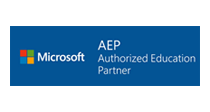Leadership and Management
Simplification of Work Processes and Procedures
Why Attend
'Going back to basics' is the main theme of this highly interactive course which aims to help participants recognize the need to simplify their organizational processes and procedures. The course will provide the participants with international best practices which will help them understand causes of complexity and identify areas for improvement by focusing on eliminating waste, simplifying procedures, and standardizing and automating opportunities. Participants in this practical course will also learn to use tools to map and diagram processes and procedures revealing issues and opportunities for improvement. Various hands-on tools will present participants with the opportunity to transfer this knowledge to their organization and expect immediate results.
Course Methodology
This course depends heavily on hands-on exercises and analysis of case studies. Through presentations and group discussions, participants will share ideas and discuss opportunities. In addition, plenary debriefs will be used to enhance the learning experience.
Course Objectives
By the end of the course, participants will be able to:- Recognize the principles of organizational design and their linkage to complexity
- Identify the impact of complex policies and procedures in organizations
- Examine the use of flow charts and work flow techniques
- Compare various tools for simplification and mapping
- Analyze and effectively distribute work allocated to employees in an organizational unit
- Appraise the importance of office layout and processes in terms of improving efficiency
Target Audience
Managers, supervisors and employees who are involved in the design or simplification of procedures as well as end users.
Target Competencies
- Applying simplification
- Process mapping
- Understanding lean and waste
- Organizational design
- Enhancing Productivity
- Simplifying layout design

Course Outline
- The management process in perspective
- Planning the work
- Types of plans
- Organizing and allocating resources
- Directing and controlling individual and organizational performance
- The control process
- Types of control
- Principles of organizing
- Designing organizational charts
- The direct link between charts and procedures
- Policies and procedures
- Definitions and concepts
- Policy manual
- Procedures manual
- Importance and goals of procedures
- Signs of complicated procedures
- Work simplification goals
- Procedure for developing effective procedures
- Productivity defined
- What are the causes of poor productivity?
- How to improve productivity
- Improving employees’ efficiency and effectiveness
- Work flow techniques
- The parallel and sequential techniques
- The stages of work simplification:
- Selection of procedure(s)
- Collecting data
- Data analysis and evaluation
- Suggestions for improvement
- Implementation
- Follow-up and evaluation
- The use of flow charts in simplification of procedures
- Simple process flow procedure charts
- Preparing and analyzing flow charts
- Simplifying procedures and recommending changes
- Lean principles to simplifying processes
- 5S program
- Swim lane charts
- Mapping and analysis tools for simplification of processes and procedures
- Process mapping
- Value stream mapping
- Supplier Input, Process, Output, Customer (SIPOC) analysis
- The turtle diagram
- Shell 'ESSA' model for simplification
- Procedures process flow chart
- The multi column process chart
- Questions to get you started
- Simplification of procedures to improve productivity
- Success factors for simplification of procedures
- Concept and importance of work distribution chart
- Preparing and analyzing a work distribution chart
- Reallocation of workload and redistribution of jobs
- Simplifying space design and layout
- Office and department layout analysis
- Using spaghetti diagram for analyzing distance and department layout
- Redesigning offices by using office layout charts
REQUEST CALL BACK
Would you like to speak to one of our consulting advisers over the phone? Just submit your details and we’ll be in touch shortly.














